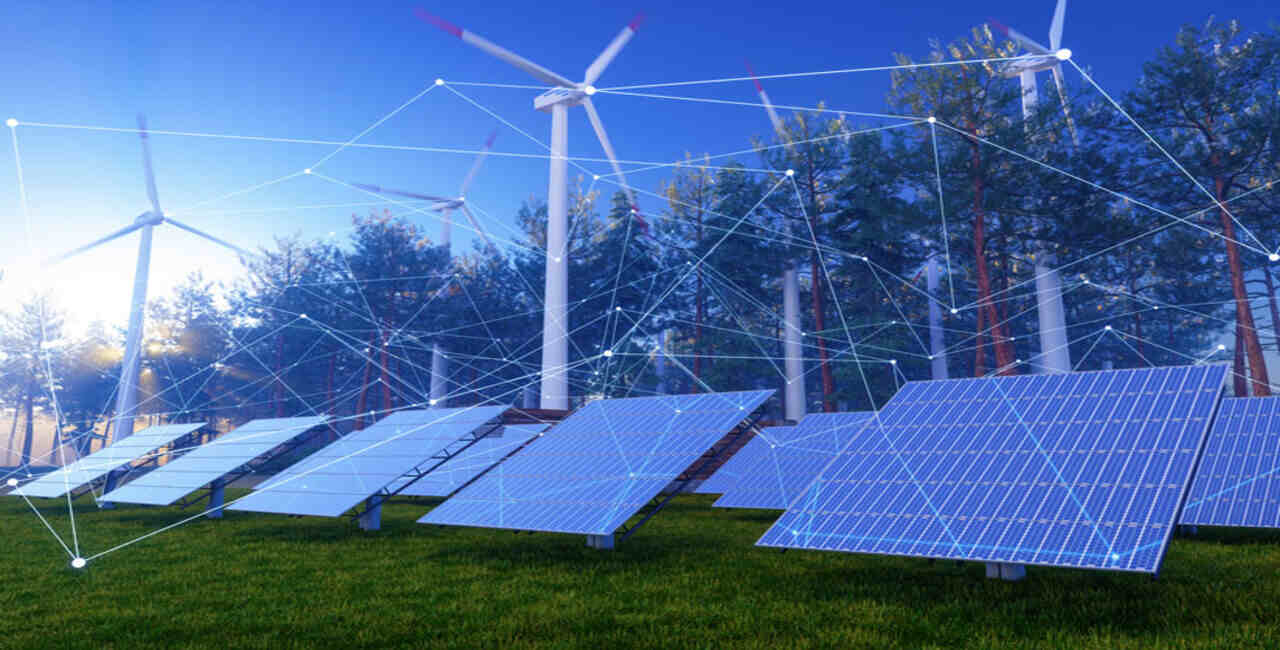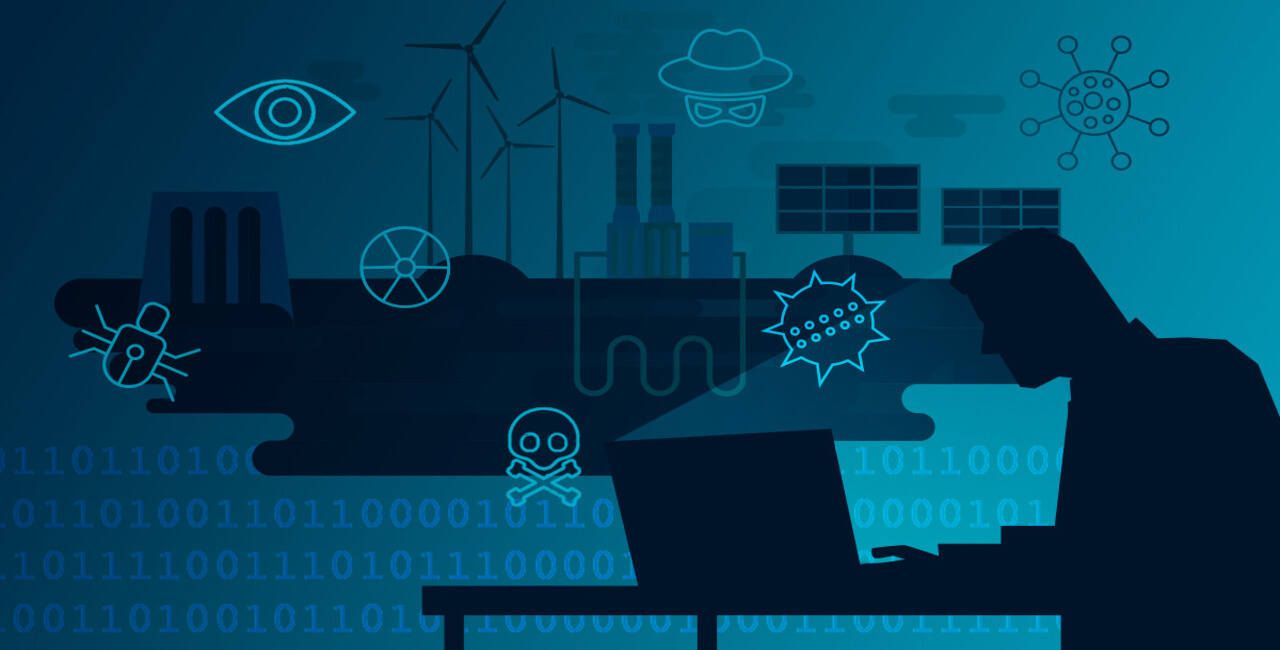Physical & Cybersecurity Guide for Solar Power Plants

The importance of comprehensive security in solar power plants cannot be overemphasized. Solar power plants are often in remote locations and can represent an easy target for theft, vandalism, and even terrorism.
On the digital front, the stakes are equally high. As pivotal components of our electricity infrastructure, solar power plants are prime targets for cybercriminals and malicious actors.
Recognizing these risks and the steps that can be taken to mitigate them is crucial. This guide explores the vulnerabilities of solar power plants and outlines proactive steps to safeguard them.
What Threats Do Solar Power Plants Face
We are increasingly reliant on solar energy to supply our power needs, solar energy is playing a large part in the global energy transition. This heightened importance has elevated the threat risk that such installations face. Under these circumstances, the level of security must be robust and multifaceted.
While it's challenging to enumerate every potential threat, the primary physical and digital threats include:
Physical Threats
· Theft: Expensive equipment like solar panels and inverters are prime targets.
· Vandalism: Deliberate damage can disrupt power generation.
· Terrorism: Larger installations can be seen as strategic targets.
Cyber Threats
· Hacking: Unauthorized access to control systems can cause operational disruptions.
· Malware and Ransomware: Malicious software can cripple operations and result in financial losses if ransoms have to be paid.
· Phishing Attacks: Attempts to deceive employees into revealing sensitive information.
The threats within these categories are vast and ever-evolving. As the prominence of solar power plants rises, we can anticipate an increase in the frequency, sophistication, and variety of attacks they will encounter.
Understanding the Cyber Threats Faced by Solar Energy Plants
We live in an age of cloud computing, remote access, and IoT devices. But it is also an age where each of these technologies brings added vulnerabilities to the table. No longer is it enough to have a secured onsite network protected by a firewall and an antivirus suite?
Solar energy plants must have robust security measures in place to protect against a raft of increasingly complex threats that include:
· Unauthorized Access: Hackers can exploit weak points in the network to gain control over essential systems.
· Malware and Ransomware: These malicious software types can infiltrate systems, either crippling them or holding them hostage for a ransom.
· Phishing Attacks: Cybercriminals use deceptive emails or messages to trick employees into revealing sensitive information or credentials.
· Distributed Denial of Service (DDoS) Attacks: Overwhelming the plant's online systems by flooding them with traffic, causing them to crash.
Solar energy plants need to stay updated on these threats and continuously adapt their security measures to counteract them effectively.
Best Cybersecurity Practices for Solar Power Plants
To keep solar plants safe a robust cybersecurity policy needs to be implemented. Among the focus areas are:
· Regular System Updates: Ensure all software, especially security software, is up-to-date to protect against known vulnerabilities.
· Multi-factor Authentication (MFA): Implement MFA for all system access points, adding an extra layer of security beyond just passwords.
· Employee Training: Regularly educate staff on the latest cyber threats and how to recognize potential security breaches, especially phishing attempts.
· Network Segmentation: Divide the network into segments, ensuring that if one section is compromised, the entire system isn't vulnerable.
· Backup and Disaster Recovery: Frequently back up all critical data to a secure offsite location and have a disaster recovery plan in place.
· Intrusion Detection Systems: Employ real-time monitoring tools to detect and respond to any unauthorized activities immediately.
Cyberthreats evolve rapidly, this means that as well as the above practices, staying up-to-date with the latest threat intelligence and adapting security strategies accordingly is essential.
Understanding the Physical Threats Faced by Solar Power Plants

Solar power plants face some unique vulnerabilities, these are often critical pieces of infrastructure in remote situations. Their physical isolation and “high-value target” nature expose them to various threats. While they face the usual physical threats that most facilities do, the added dimension of potential terrorism adds further urgency.
Addressing these vulnerabilities requires a comprehensive physical security strategy.
Best Physical Security Practices for Solar Power Plants
The best practices include a mix of “traditional” and cutting-edge systems. While a sturdy fence will always be essential, a sturdy fence monitored by CCTV and including gates protected by modern access control systems is a far greater deterrent.
A strong set of security measures should include:
· Robust Fencing: Surround the entire facility with sturdy fencing to deter unauthorized access.
· Surveillance Cameras: Install high-resolution cameras at strategic points for round-the-clock monitoring.
· Lighting: Ensure adequate lighting, especially for nighttime, to deter potential intruders.
· Access Control Systems: Commercial access control systems feature biometric access, card door access systems, and alarm systems to restrict entry.
· Regular Security Patrols: Employ trained security personnel to patrol the facility, especially during non-operational hours.
· Emergency Response Plan: Have a plan in place detailing the steps to take in case of security breaches or other emergencies.
By integrating these practices, solar power plants can effectively mitigate physical threats and ensure their infrastructure's safety.
Keeping Solar Installations Safe: The Next “Energy Security” Battlefield

Solar power plants are a critical component of the switch to renewable energy sources. However, as their importance grows, so do the threats they. From digital to physical and from vandalism and terrorism, these plants must be protected against a multitude of threats. This is necessary to protect against financial loss, but increasingly this will be required to protect solar energy’s impact on grid stability and reliability.
By staying vigilant, continuously updating our security practices, and recognizing the ever-changing nature of threats, we can ensure that our solar installations remain both productive and secure, lighting the way for a sustainable future.

